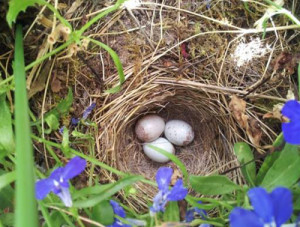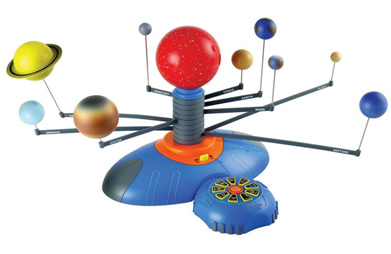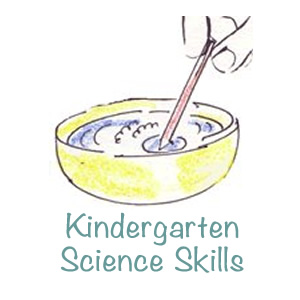When teaching science topics to young children, provide them with lots of objects to observe, touch and ask questions about. Children develop an awareness of the world around them as they explore and investigate it.
Earth and Space Sciences – The study of the universe and the structure of the Earth. Children investigate the characteristics of rocks, soil, water and weather conditions in their immediate surroundings.
Physical Sciences – The study of matter and energy and their interactions, the study of non-living things. Children discover the properties of objects and materials and experiment with force and motion. Acoustics, chemistry, electricity, magnetism, matter, mechanics, nuclear science, and optics are all categorized under physical science.
Life Sciences – The study of the diversity, continuity, interactions and balance among organisms and their environments. Children explore the characteristics of living things – plants, animals, and human beings.
Involve children in experiences such as: 
- cooking
- nature walks
- playing with magnets
- experimenting with color paddles
- taking things apart
- observing pond water in jars with magnifying glasses
- planting seeds
Earth and Space Sciences
- observe their surroundings
- describe features of their nearest environment
- identify characteristics of each season
- describe the properties of air
- identify some living and non-living materials found in soil
- classify rocks and soil according to their physical characteristics
- describe some characteristics of rocks, soil, and water
- describe the effects of water and wind on rocks and soil
- describe the effects of weather on living things
- understand the relationship between the position of an object, its shadow, and the sun
Whether collecting soil samples and rocks from different areas of the schoolyard or helping the teacher construct mini water cycles out of an old aquarium, children love investigating and observing features of the Earth and its atmosphere. When teaching science, introduce new vocabulary to describe the characteristics of rocks, soil, water, and weather conditions in your students’ surroundings as they play.
Physical science – the study of non-living things
- describe properties of materials, color, shape, texture, size, and weight
- identify materials that make up familiar objects
- describe ways to rethink, reuse, reduce, refuse, and recycle
- tell the difference between solids, liquids, and gases
- identify common types of forces (magnetism, gravity..)
- use a variety of objects to describe motion and changes in motion
- describe the properties of a variety of common objects
- identify a variety of changes that cannot be reversed (popped popcorn)
- recognize changes in properties of matter when water is added
- recognize changes in properties of matter when it is heated or cooled
- describe how objects can change over time
Kids love to sort piles of objects, take things apart, experiment with materials and make collections of things. As students play, observe, and classify things they begin to identify the properties of these objects and think about their similarities and differences and how each one may be used. Winter is a great time to introduce kindergarten science lessons involving water and ice which will lead to many questions. Something as simple as filling the water table with a bucket of snow gives children opportunities to watch snow melt, to feel ice crystals and make other observations as they play.
Life Sciences – characteristics of living things
- describe characteristics of some local plants and animals e.g. color, shape, size, texture
- compare local plants and animals
- learn what plants and animals need to stay healthy
- compare the life cycle of an animal hatched from an egg with one born from the mother
- describe the appearance and behavior of a variety of animals
- identify similarities and differences among animal species
- Insects are part of the children’s immediate surroundings, and studying them allows kids to observe characteristics of animals and offers lots of material for data collection, recording sheets, poster displays and more
Whether learning the names of trees, planting seeds, or making a leaf collection, children have opportunities to count, measure, classify, compare and extend their vocabulary. Local parks often have great programs to help teachers and parents learn how to involve children in the outdoors.
Keeping living creatures in the classroom
Teach children how to respect and treat living creatures when studying them. Tapping on bug bottles, shaking the container, leaving living things in the hot sun should all be discouraged.
Teach the “Four Ls”
- Look at them,
- Learn about them,
- Let them go (after an hour or two), then…
- Leave them alone.
Next: A science center is a terrific way to help children investigate their world in your learning environment. Find out easy tips for setting one up…



